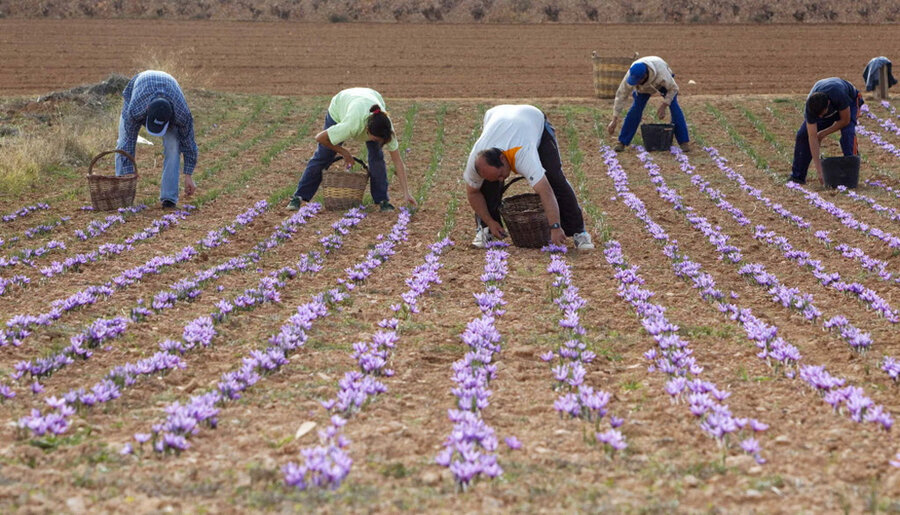Grow a crop more costly than gold
Loading...
The last of the fall-flowering crocuses to pop up as a pre-winter treat in the garden is Crocus sativus, the saffron crocus. It is easily distinguished from other fall crocuses by its three elongated, deep-red stigmas (the female part of the plant), which extend well beyond bright yellow anthers, where bees burrow in to collect pollen. The saffron crocus has been prized for thousands of years worldwide, including in Iran, China, India, Spain, and Greece. Saffron is used as medicine, and a cloth dye, an aphrodisiac, and an exceptionally desirable spice.
Cleopatra and Alexander the Great both added it to their bathwater, and it’s mentioned in the Bible’s Song of Solomon. Pirates of old were said to prefer saffron to gold as plunder; it was just as valuable but much easier to handle.
European demand for saffron-based medicines peaked during the spread of the plague in the 14th century. When wealthy noblemen intercepted and stole a shipment of saffron, the incident sparked a 14-week Saffron War. The fighting and piracy spurred saffron cultivation in parts of Germany.
Today, at $1,500 per pound or more, saffron gleaned from inside the lavender C. sativus flowers beats the price of gold, ounce for ounce.
It isn’t because this crocus is difficult to grow, but because of the brief window during which the red stigmas must be harvested by hand and carefully dried. It’s an extremely labor-intensive process.
Saffron crocus blooms within a week or two in late October or early November. The flowers open at dawn and within a few hours, the stigmas begin to collapse and they must be picked quickly before becoming limp.
It takes 40 corms (bulbs) to yield a tablespoon of stigmas. For a pound of saffron, roughly 225,000 stigmas are needed; at three stigmas per flower that’s 75,000 flowers!
Most recipes call for just a few threads of saffron and, if stored properly in an airtight container in a dark place, it keeps for two years or more. If you’re willing to get up early to harvest, growing your own small stash is certainly feasible.
Saffron crocus bulbs are available through many gardening outfits, in catalogs or online. The crocuses are hardy to at least USDA Zone 5 (winter lows to minus 20 degrees F.), need sun in the fall to bloom, and like it hot, dry, and sunny in the summer, so don’t overwater. They prefer soil with good drainage, so amend with compost or gravelly sand. Plant bulbs 4 to 6 inches deep in large or small drifts in part to full sun. All crocuses, including C. sativus, are pretty in rock gardens where even a single specimen can be appreciated.
During the first year, about 60 percent of the newly planted corms will produce one flower each; after that, two flowers each. Dig up and separate the corms about every four years in late June or early July, when spring growth has turned brown. Let them dry in a shaded, well-ventilated place, and plant outside again in late August.
Today, more than 90 percent of the world’s saffron is produced in Iran, with much smaller amounts grown in India, Spain, and Greece. There has been an effort to encourage cultivation of saffron in Afghanistan to replace opium poppy crops.





